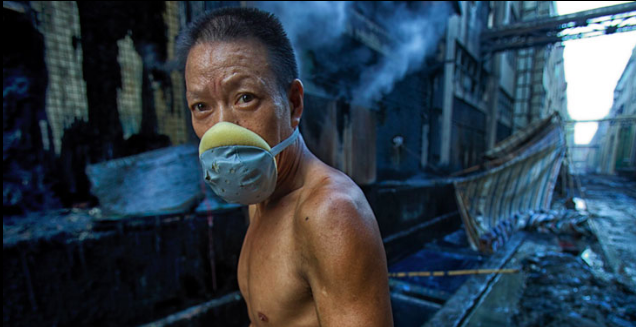Introduction
Owning a pair or two of jeans has become second to nature in today’s world with the wave of consumption and high levels of spending on fast fashion and a booming textile industry. With heavy competition within the fashion industry, prices have become ridiculously low, failing to account for the greater price tag posed by the production of a single pair of jeans. Considering the dilemmas of the denim industry from an ESG perspective, not only does it burden the natural world, but there have been accusations of employing child labour in these factories and workers undergoing harsh labour conditions, with little or no representation under unions to win back their labour rights.
Background
It is undisputed that the denim industry as we previously knew it was doing more harm than good. The statistics prove for themselves the trauma a single pair can cause. 1.7 billion tonnes of CO2 is said to have been generated by the clothing industry over the past year with an estimate of 1.2 billion pairs of jeans being produced worldwide. More specifically, a single pair of jeans is said to create 20 kg of CO2, which amounts to the same as driving a car for 50 miles. The water use is insurmountable as it takes 3,480 litres of water to make a single pair of the iconic Levi’s 501 jeans.
 Child labour in factories today are largely diminishing as companies have started to become more accountable for their actions, coupled by stringent government regulations. However, this does not mean that it is non-existent. Child labour is simply employed because it is a cheap source of labour and usually known to be un-resisting. There are very rare cases of children organizing themselves to form trade unions. Many occupations in the textile factory are actually more viable for employers as paying 2-3 children would be equivalent as paying one adult for the same work done.
Child labour in factories today are largely diminishing as companies have started to become more accountable for their actions, coupled by stringent government regulations. However, this does not mean that it is non-existent. Child labour is simply employed because it is a cheap source of labour and usually known to be un-resisting. There are very rare cases of children organizing themselves to form trade unions. Many occupations in the textile factory are actually more viable for employers as paying 2-3 children would be equivalent as paying one adult for the same work done.
China-centric Denim Production
So how does all this worldwide attention on the denim industry take shape locally? China has definitely become a focal point due to the mass production of denim that takes place here, Xintang claims to be the denim capital of the world- not for consumption, but production. On the surface, the bringing in of this industry to Xintang serves a very positive trend where the their local economy was booming, providing jobs to around 222,000 people.
On a deeper level, Xintang is now known as the crisis capital where the locals are refusing to work for garment factories and because of the unbearable pollution it had caused on the region. The water in the East Xintang river is said to have turned blue due to the denim dyeing process and produce a strange smell. The wastewater from the dyeing process used to run through a water treatment plant, but that has now been closed for the past three years and now the water runs completely untreated into the previous fresh water river.
Not only is this process a hazard to the workers directly but the town’s know to be plagued with other social issues such as breakout of rashes during summer and people unable to have children after being directly exposed to the dyeing and washing period over a significant period of time. Concerns have also been drawn to their drinking water source from the river to now be heavily contaminated and threatening water security even in other cities such as Dongguan and Shenzhen, making this a geopolitical dilemma for greater China.
Attention from media and external stakeholders
The lack of greater social responsibility and behavioral patterns of consumers came to light in the documentary, RiverBlue, which is a hard hitting film which analyses the implications on developing nations to feed the greedy appetite of the West for fast-fashion and cheap goods. The documentary itself served to fulfill two purposes; first it highlighted the harsh realities of the developing world who are at the mercy of corporates. Second, and most importantly, it brought to light that even though these denim production companies have managed to run through the loopholes of ESG disclosure, local environmental policies and labour rights, at some point external stakeholder and interested parties will start to make the company accountable for their direct actions.
NGOs such as GreenPeace too started investigating production towns such as Xintang and brought to light what was happening in the local area. GreenPeace East Asia released a report examining two textile industry towns in Guangdong province and the results and behind-the-scenes look at how our favourite piece of clothing is made makes us question our consumption patterns.
How companies are pressured to change
Once the media has gripped the world by highlighting issues as severe as this, companies are bound to face sabotage of products coupled by the growing worldwide solidarity for ethical products. Particular to the fashion industry, the ‘Clean Clothes Campaign’ has taken foot globally where there have been organized protest and petitions for improving working conditions in the global garment industry and have a very heavy online presence [See more at: https://cleanclothes.org/].
It is now evident that even if big corporations chose to run through their local guidelines on sustainability for their manufacturing and production process, in this rapidly globalized atmosphere, external stakeholders will hold them accountable for their unethical actions. Businesses today can no more be laid back about their ESG policies as they are no longer only accountable to government regulations. Businesses are now being pushed to innovate their current unethical practices to more ESG friendly methods.
Even with the denim industry, Francois Girbaud, the famous initial designer of blue jeans, responded to the RiverBlue documentary by acknowledging the media industry for bringing to light these issues and continued to pledge that he and his team are now working to accomplish the same washing and dyeing process with laser and air technologies in partnership with a Spanish company called Jeanologia. Consumers of blue jeans too are starting to show resistance to the denim industry, by opting for ethical clothing brands. With the release of this documentary was the launch of a website called fashionheroes.eco [http://fashionheroes.eco/], which provides a platform for both, consumers and producers of ethical clothing to come together and provide education to consumers on specific brands that offer ethical clothing lines.
In 2018, there is no escape for companies, whether it be in the fast-fashion sector or not, as the general consumer base for daily products are becoming conscious of their decisions and their personal carbon footprints. Businesses who did follow these unethical practices in the past are now pressured and forced to change, while the only hope for running a successful business hereafter has come down to how well companies are performing in terms of their ESG. This has become crucial for companies who produce goods directly for consumption where they have to either strictly comply to ESG regulations or otherwise face the threat of international backlash and possible client sabotage.



